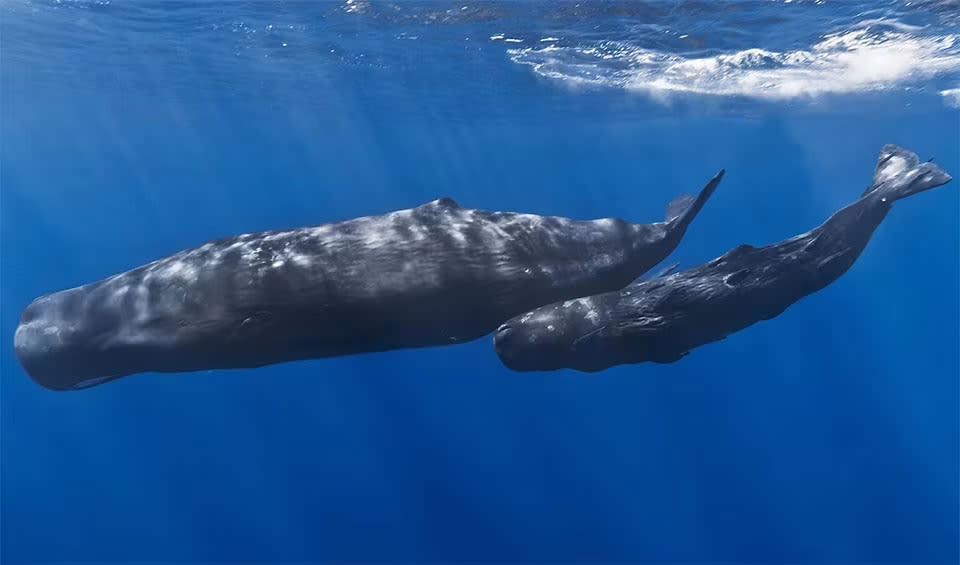With the sperm whale (Physeter macrocephalus) as its most renowned member, it is characterized by several remarkable physiological and ecological traits that set it apart from other cetaceans. The sperm whale, the largest of the toothed whales, possesses a series of unique adaptations that have captivated scientists and the public alike.
One of the most distinctive features of sperm whales is their massive head, which can account for about one-quarter to one-third of their total body length. This head houses the spermaceti organ, a large cavity filled with a waxy substance called spermaceti. Historically, spermaceti was highly sought-after for use in oil lamps, lubricants, and candles, leading to the sperm whale’s name. This substance is critical in the whale’s ability to regulate buoyancy. By altering the temperature of the spermaceti, sperm whales can adjust their density in the water, allowing them to dive deep into the ocean to hunt for their primary prey, squid, including the giant squid.
Another unique characteristic distinguishing sperm whales from other whale species is the wrinkled or corrugated appearance of their back skin. These wrinkles are thought to reduce turbulence and drag as the whale moves through the water, thereby increasing its hydrodynamic efficiency during deep dives.
Sperm whales are also known for their complex social structures and behaviors. They live in matrilineal family groups, with females and their young forming close-knit units. At the same time, mature males tend to lead more solitary lives, only joining groups during the breeding season. These whales communicate using a sophisticated system of clicks and codas, which serve not only for echolocation in the ocean’s dark depths but also for social communication. The patterns and sequences of these sounds vary among different groups of sperm whales, indicating a form of cultural transmission within populations.
Distribution
 Indian ocean
Indian ocean Pacific ocean
Pacific ocean Atlantic Ocean
Atlantic Ocean Black sea
Black sea Mediterranean Sea
Mediterranean Sea Gulf of Mexico
Gulf of Mexico Okhotsk Sea
Okhotsk SeaDid you know?
- Only large makes journey ro northern and southern polar regions.
- Tend to remain between 40N and 40S latitude.
Anything we've missed?
Help us improve this page by suggesting edits. Glory never dies!
Suggest an editGet to know me
Terrestrial / Aquatic
Altricial / Precocial
Polygamous / Monogamous
Dimorphic (size) / Monomorphic
Active: Diurnal / Nocturnal
Social behavior: Solitary / Pack / Herd / Group
Diet: Carnivore / Herbivore / Omnivore / Piscivorous / Insectivore
Migratory: Yes / No
Domesticated: Yes / No
Dangerous: Yes / No




